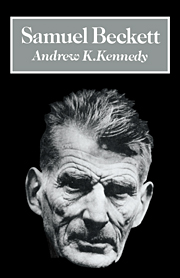1 - Contexts for the plays
Published online by Cambridge University Press: 23 February 2010
Summary
Beckett's plays, once regarded as ‘anti-plays’ (in a superficial yet telling cliche), can now be seen as inherently dramatic. More than that, the often hyper-literary fiction was followed and cut across by fundamentally theatrical, stage-oriented plays – constantly using yet transforming popular as well as literary dramatic conventions. Vividly concrete theatre images and figures dominate the plays: from the entrance of the whip-cracking Pozzo leading Lucky in harness, to the extra-terrestrial voices chanting from urns in Play. Starting with Waiting for Godot, Beckett–s plays have, aided by performance, become his most accessible works (which is one reason for starting this study with the plays, even though chronologically they are preceded by the early and mature fiction). In a relatively short period of creativity – Godot was written, in French, in 1948, but brought to fame only by the New York and London productions of 1954 and 1955, while Happy Days, the last of the full-length plays, was first performed as long ago as 1961 – Beckett created a radically new kind of theatre. That innovative art embraces all the elements of theatre – new types of play, stage metaphor, character, dialogue, visual and sound effects. Even the potentially disembodied ‘I’-voices of isolated soliloquisers appear embodied in the time present and the dynamics of the stage. The dramatised voices of Krapp or Winnie or the three voices of Play mark a fundamental generic difference from any solo narrator in the trilogy. Other writers who had come from fiction to drama – like Chekhov and Pirandello – started from the realistic short story, which was nearer to the traditional idea of the ‘dramatic’.
- Type
- Chapter
- Information
- Samuel Beckett , pp. 19 - 23Publisher: Cambridge University PressPrint publication year: 1989



